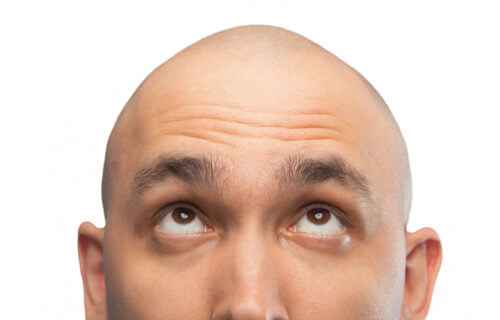SALT LAKE CITY, Utah — Why don’t humans have nearly as much hair as other mammals? From mice and horses to orangutans and chimpanzees, all other mammals display impressive coats of fur or hair, so why not us? Fascinating new findings by a team at the University of Utah are finally providing some much-needed answers.
A first-of-its-kind comparison of genetic codes spanning 62 different animals revealed that humans still have all the genes necessary to sport a full coat of body hair, but evolution appears to have “disabled” those specific genes. Specifically, this project points to a set of genes and regulatory regions of the genome essential for making hair. Study authors hope this work one day leads to new ways to regrow hair after balding as a result of chemotherapy or disorders that cause hair loss like alopecia.
Interestingly, the study notes that nature has used the very same evolutionary strategy in at least nine other mammals residing on various branches of the evolutionary tree. The ancestors of rhinos, naked mole rats, dolphins, and other hairless mammals all appear to have followed the same path to deactivate a common set of genes, resulting in the loss of hair and fur.
“We have taken the creative approach of using biological diversity to learn about our own genetics,” says Nathan Clark, Ph.D., a University of Utah human geneticist, in a media release. “This is helping us to pinpoint regions of our genome that contribute to something important to us.”
Clark carried out much of the research while at the University of Pittsburgh with researchers Amanda Kowalczyk, Ph.D., and Maria Chikina, Ph.D.
Mystery genes may contribute to hair growth
Hair and fur come in various shapes and sizes across the animal kingdom. A monkey’s coarse body hair, for example, is quite different from a cat’s soft fur. The same applies to hairlessness. While humans do have hair on our heads, because the vast majority of our bodies are hairless, we fall into the “hairless” category. Other mammals with hints of hair like elephants, sheer-coated pigs, and mustachioed walruses are in the same category.
It isn’t all bad being hairless. Without dense hair, elephants cool off more easily in hot climates and walruses glide effortlessly in the water, for example. However, despite different animals needing to go hairless for different evolutionary and survival reasons, study authors found hairless mammals accumulated mutations in many of the same genes. More specifically, these genes included those that code for keratin and additional elements that build the hair shaft and promote hair growth.
READ: Best Oils For Hair Growth: Top 5 Products Most Recommended By Experts
The study also indicates regulatory regions of the genome are equally important. These areas do not code for structures that make hair, but they do influence the process indirectly. They decide when and where certain genes turn on and how much is created. Researchers uncovered other genes for which a role in sprouting hair had not yet been defined. In summation, this work points to a new set of genes that could play a role in growing hair.
“There are a good number of genes where we don’t know much about them,” Dr. Kowalczyk adds. “We think they could have roles in hair growth and maintenance.”
The gene study could reveal ways of beating cancer
To reach these findings, researchers searched for genes in hairless animals that evolved at faster rates in comparison to their counterparts in hairy animals.
“As animals are under evolutionary pressure to lose hair, the genes encoding hair become less important,” Dr. Clark explains. “That’s why they speed up the rate of genetic changes that are permitted by natural selection. Some genetic changes might be responsible for loss of hair. Others could be collateral damage after hair stops growing.”
Next, study authors developed computational methods capable of comparing hundreds of regions of the genome simultaneously. They surveyed a total of 19,149 genes and 343,598 regulatory regions conserved across the dozens of mammalian species. During that process, the team took special steps to discount genetic regions responsible for evolving other species-specific traits, such as adapting to aquatic life.
Dr. Clark says the fact that an unbiased screen identified known hair genes proves this approach works. This study also suggests that the genes seen in the screen, considered less well-defined, could be just as important for growing hair, or not growing it.
Moving forward, Dr. Clark and the colleagues are now using the same approach to analyze and define genetic regions involved in the prevention of cancer, extension of the human lifespan, and understanding other health conditions.
The study is published in the journal eLife.
You might also be interested in:
